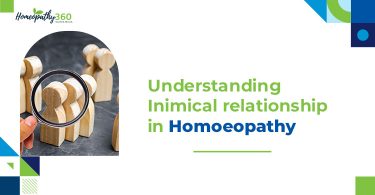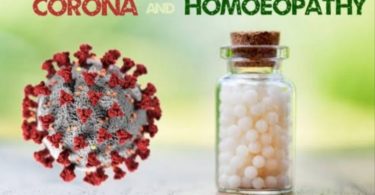-Dr Dona Thomas
(Assistant Professor, Department of Pathology and Microbiology, Yenepoya Homoeopathic Medical College)
Abstract:
Alloxan is a lesser-known Homoeopathic remedy mainly used for the treatment of Diabetes Mellitus. In other schools, this chemical inorganic compound is used to induce Diabetes Mellitus in experimental rats for research purposes. This article is a collaborative study on the animal studies and Homoeopathic proving conducted on Alloxan to understand the toxicologic pathology of Alloxan and utilization of this knowledge in the field of homoeopathy as guides in Homoeopathic provings.
Keywords: Alloxan, Diabetes Mellitus, Toxicologic Pathology, Degeneration, B-Cells
Introduction:
Alloxan or Alloxan hydrate is an organic compound with formula C4H2N2O4. Alloxan is a member of the class Pyrimidone, with a structure similar to that of perhydropyrimidine. The anhydrous derivative is also known as a dimeric derivative. These are some of the earliest known organic compounds.
As it is a hyperglycemic agent and metabolite, it shows a variety of biological activity.
IUPAC name: 5,5-dihydroxypiramidine-2,4,6(1H,3H,5H)-trione
Other names: 5,5-dihydroxybarbituric acid
Physical property:
The acidic compound formed by oxidation of Uric Acid, isolated as an efflorescent crystalline hydrate. The anhydrous crystals are yellow coloured, rhomboid prisms soluble in alcohol and insoluble in water. It becomes colourless when hydrogenated. Alloxan stains skin purple due to the formation of murexide.
Synthesis:
Alloxan was originally obtained by oxidation of Uric Acid by Nitric Acid. Can be prepared by oxidation of barbituric acid by chromium trioxide. The dimeric derivative alloxantin can be prepared through partial reduction of Alloxan with hydrogen sulfide.
Toxic pathology:
Alloxan is a toxic glucose analogue, which selectively destroys insulin-producing B-cells of the Islets of Langerhans in the Pancreas. This results in the development of Insulin Dependent Diabetes Mellitus also called as ‘Alloxan Diabetes’ which resembles Type 1 diabetes in pathophysiology and histology.
Alloxan is toxic to B-cells due to its accumulation in uptake via the GLUT2 glucose transporter. This is the presence of intercellular thiols generates reactive Oxygen species in a cyclic reaction with Dialuric Acid as a reducing product. This redox reaction resulting in the formation of superoxide and hydroxyl radicals make alloxan toxic to B cells. It reduces glutathione, an antioxidant capable of preventing damage to cellular components caused by reactive Oxygen, due to its high affinity to SH- containing cellular compounds. Also inhibits glucokinase, an SH-containing protein.
Alloxan has a toxic effect on the hepatic and renal cells too. Recent researches conducted by Japanese Society of Toxicologic Pathology shows that Alloxan causes Acute Tubulo-intestinal nephritis. It initially causes degeneration of the thick ascending limbs of Henle and induces mitochondrial and cellular damage in the tubular epithelium. This consequently results in Nephrotoxicity.
Animal studies conducted shows that administration of Alloxan results in the increase of DNA per liver cell nucleus. Histopathology shows hepatic sinusoidal enlargement, micro and micro hepatocyte fatty degeneration with progressive structural loss and steatohepatitis with periportal fibrosis. The decrease in the number of intracytoplasmic organelles, degeneration of mitochondria, rough endoplasmic reticulum and nucleus.
Homoeopathic utility: Alloxanum/ Alloxan
Proving:
Alloxan was discovered by Dum abd his collaborates in 1943. Homoeopathic proving of Alloxan was done by WL Templeton twice, in 1949 on 6 subjects with potencies 6C & 30C and in 1951 on 9 subjects and 7 controls.
Sphere of action:
Pancreas, Kidney, Liver, Lung, Blood
Pathophysiology:
Alloxan causes rapid degeneration of the B-cells of the islets of Langerhans, which is responsible for the production of Insulin. This is done either by inhibition of enzymatic processes (proteins of Thiol group SH) or by affecting the chelating power of Zinc known for the intercellular fixation of Insulin.
Clinical Uses:
Diabetes Mellitus, Hypoglycemia, Glycosuria, Pancreatic Disorders, Azotemia, Hypophosphoremia
Keynotes:
- Need for solitude with indifference
- Forgets recent facts
- Dryness of digestive mucous membranes;
- Excessive thirst with cracked lips, bitter taste and frequent urination;
- Lack of heat and of vital reaction;
- Disturbed sleep with nightmares; Disagreeable and agonizing dreams
- The sensation of the body being dispersed into different parts
- Joint pains in the lumbar, sacral and ileocecal regions. Osteoporosis and muscular weakness.
- Spontaneous ecchymosis and eruptions of itching pimples
Modalities:
Aggravation: between 4-7 in the evening; while waking up; by laughing, noise, dust, smell, heat and sweets;
Amelioration: while climbing stairs; by closing eyes; in hot weather; by stretching.
Constitution: the subjects are often phosphoric and very weak; nervous, uneasy and anxious.
Neuro- Endocrinol- psychic system:
Psychic:
- Great forgetfulness, mostly short term memory. Spelling mistake, Dyslexia.
- Sadness and tearfulness improved by solitude; uneasiness about the future.
- Indifference to the surrounding environment, to loved ones, to work and conversations.
- Irritable with people, loud sounds, talking. Fits of anger hurried, wants to do everything quickly; taps foot with impatience. Dogmatic. Dictatorial.
- Confusion as to his identity, as if the head was being lifted off.
Nerves:
- Sensation o0f constriction and heat in the head, which is cold to touch.
- The heaviness of head when waking up with the impression of having the hair drawn, worse from 4-6pm.
- Headache when hungry, but not relieved by eating; worse laughing, warm room, coughing, and better by ascending steps, talking, travelling.
- Trouble to sleep with nightmares, somnambulism, insomnia till 2 am; dreams of accidents, being chased by horse, death of a friend, murdered by knife, of being imprisoned.
Digestive system:
Mouth- Tongue- Pharynx
- Breath smells like apple
- Corner of lips cracked, with dry, chapped lips. Lower jaw painful, toothache worse sweet things.
- Small, superficial ulcers on the mouth and palate.
- The bitter, acidic, sweet taste of the lips with dry mouth.
Stomach- Intestine – Abdomen
- Nausea before meals and heavy feeling after; nausea when travelling.
- Easy satiety with a constant feeling of hunger.
- Aversion to salt. The desire for cold drinks and refreshing things.
- Diarrhoea worse between 6-9am, with burning excoriating pain in anus.
- Stools clammy and sticky, blood streaked. Fullness after stools.
Cardio- Hemo- Vascular System
Blood:
- Reduction in the number of phosphates in the blood plasma.
- Reduction of sedimentation rate.
Heart:
- Pain as of a punch in the precordial region. Shooting pain in the heart, worse walking. Cardiac neurosis. Retro-sternal cramping.
Chest:
- Feeling of heaviness and stitching pain better during menses.
Lungs:
- Breathing difficulty after meals.
Sense Organs:
Eyes:
- Conjunctivitis, eyelids red, burning and itching. Eyes painful worse reading, light and better by closing eyes.
- Dim vision and twitching of eyelids on waking. Sparks like fragments of fire. Myopia
Ears:
- Deep, drumming pain inside, itching of the auditory canal.
- Eczema of the outer ear.
- Acute catarrh of the nasal mucosa with streaming, either from right or left side.
- Worse dust, smell as of musty books, hot air.
Urogenital system:
Urinary:
- Pain in the left kidney during micturition. Frothy urine, burning as it passes down the urethra. Morbid desire to urinate; cannot hold urine for long.
- Incontinence on hurrying to get up, on sneezing; bed wetting.
- The coldness of the bladder, the worse draft of air.
Genitals:
- Inflammation of vulva and vagina, the sensation of swelling after standing for a long time.
- Non-irritating, white leucorrhoea worse towards menses.
Locomotor system:
- Lumbosacral pain: aggravated in bed, in kneeling, and while standing; better in a hot climate. Sacro-iliac pain: aggravated by bending forward, and by movement.
- Pain with the rigidity of the cervical region worse in bed, cramped scapular pain aggravated by drinking.
- Cramps of the calves and of the toes and shivering pain of the arms, legs better by stretching and aggravated by standing and by coldness.
- Numbness of arms while rising and of legs while crossing them.
Skin:
- Dry, cracked eczema. Ecchymosis. Rheumatoid purpura without fever. Beginning suddenly with large, benign ecchymosis.
- Spontaneous bruising of the fingers and legs.
Relations:
Compare: Uranium Nitricum, Phosphoric Acid, Argentums Nitricum
Conclusion:
According to Dr Hahnemann in aphorism 110, toxicological symptoms, though cannot be considered as a homoeopathic symptom, helps us to improve upon the symptomatology of less proven remedies and will thereby help us to validate symptoms, understand its possible sphere of actions and pathophysiology. Studies like this were animal proving and human proving are collaborate analyzed, lesser-known and less proven remedies can have more authentic symptomatology.
Reference:
- Alloxan [Internet]. En.m.wikipedia.org. 2019 [cited 17 March 2019]. Available from: http://en.m.wikipedia.org/wiki/Alloxan
- T S. The mechanism of alloxan and streptozotocin action in B cells of the rat pancreas. – PubMed – NCBI [Internet]. Ncbi.nlm.nih.gov. 2019 [cited 18 March 2019]. Available from: http://www.ncbi.nlm.nih.gov/m/pubmed/11829314
- National Center for Biotechnology Information.PubChem Database. Alloxan,CID=5781 [cited 18 March 2019]. Available from: http://pubchem.ncbi.nlm.nih.gov/compound/5781
- Finar I. Organic chemistry. 3rd ed. Vol. 2. Stereochemistry and the chemistry of natural products. 5th ed. Longmans; 1964.
- Terayama Y, Kodama Y, Matsuura T, Ozaki K. Acute alloxan renal toxicity in the rat initially causes degeneration of thick ascending limbs of Henle. Journal of Toxicologic Pathology. 2017;30(1):7-13.
- Bass A, Diermeier H, Cafruny E. Effect of Alloxan on Liver Desoxyribonucleic Acid. The Journal of Pharmacology and Experimental Therapeutics. 1953;107(4):478-481.
- Singh S, Gadhok G, Rana S. Effect of alloxan-induced diabetes on liver and kidney function in arsenic-treated rats. Toxicological & Environmental Chemistry. 2006;88(4):673-682.
- Murphy R. Lotus MateriaMedica. 3rd ed. Noida, UP B Jain Publishers (P) Ltd; 2017.
- Julian A O. Dictionary of Homoeopathic Materia Medica of 131 New Homeotherapeutic. New Delhi: B Jain Publishers (P) Ltd; 2006.
- Updates I. Alloxan – Initiative to Promote Research in Homeopathy [Internet]. Initiative to Promote Research in Homeopathy. 2019 [cited 3 April 2019]. Available from: http://researchinhomeopathy.org/alloxan/





